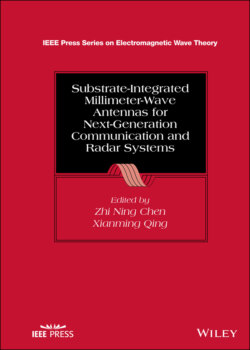Читать книгу Substrate-Integrated Millimeter-Wave Antennas for Next-Generation Communication and Radar Systems - Группа авторов - Страница 17
1.3 Millimeter Wave Technology 1.3.1 Important Features
ОглавлениеmmW technology has long been developed for various wireless systems in the past decades because of the apparent advantages over the systems operating at the lower frequency bands, that is, their shorter operating wavelength and wider operating bandwidth with the same fractional bandwidth. The shorter operating wavelength is, for instance, good for an imaging system with higher spatial resolution. Physically the resolution limitations in an imaging system restrict the ability of imaging instruments to distinguish between two objects separated by a lateral distance less than approximately half an operating wavelength of waves used to image the objects.
With the shorter operating wavelengths, mmW systems also enjoy an advantage over the systems operating at lower frequencies, namely, a tiny component size. In particular, the overall volume of the mmW devices can be greatly reduced because the performance of some key radio frequency (RF) components are determined by the electrical size of the design, for instance, antennas and filters. The smaller size of the RF components definitely benefits the device design significantly, especially for applications requiring tiny devices such as handsets, wearables, and implants. For example, it is very challenging to install more antennas, typically more than two antennas operating at the bands of 690–960 MHz in existing handsets with limited overall space. However, it is easy to install multiple antennas and even arrays operating at, for example, 28 or 39 GHz bands for the mobile phones in future fifth generation (5G) networks.
Another attractive advantage is the wide operating bandwidth of the mmW systems. The 10% operating bandwidth at a 60 GHz band offers a bandwidth of 6 GHz, 10 times the 10% bandwidth at 6 GHz, namely 600 MHz. The wider absolute operating bandwidth is able to support the transmission at much higher data‐rates according to the Shannon–Hartley theorem. The fundamental information theory tells us that the maximum transmission rate or capacity over a communication channel in the presence of noise is directly proportional to a specified bandwidth [4]. Therefore, the mmW wireless communications can easily achieve the data‐rate of a few gigabits per second (Gbps).
